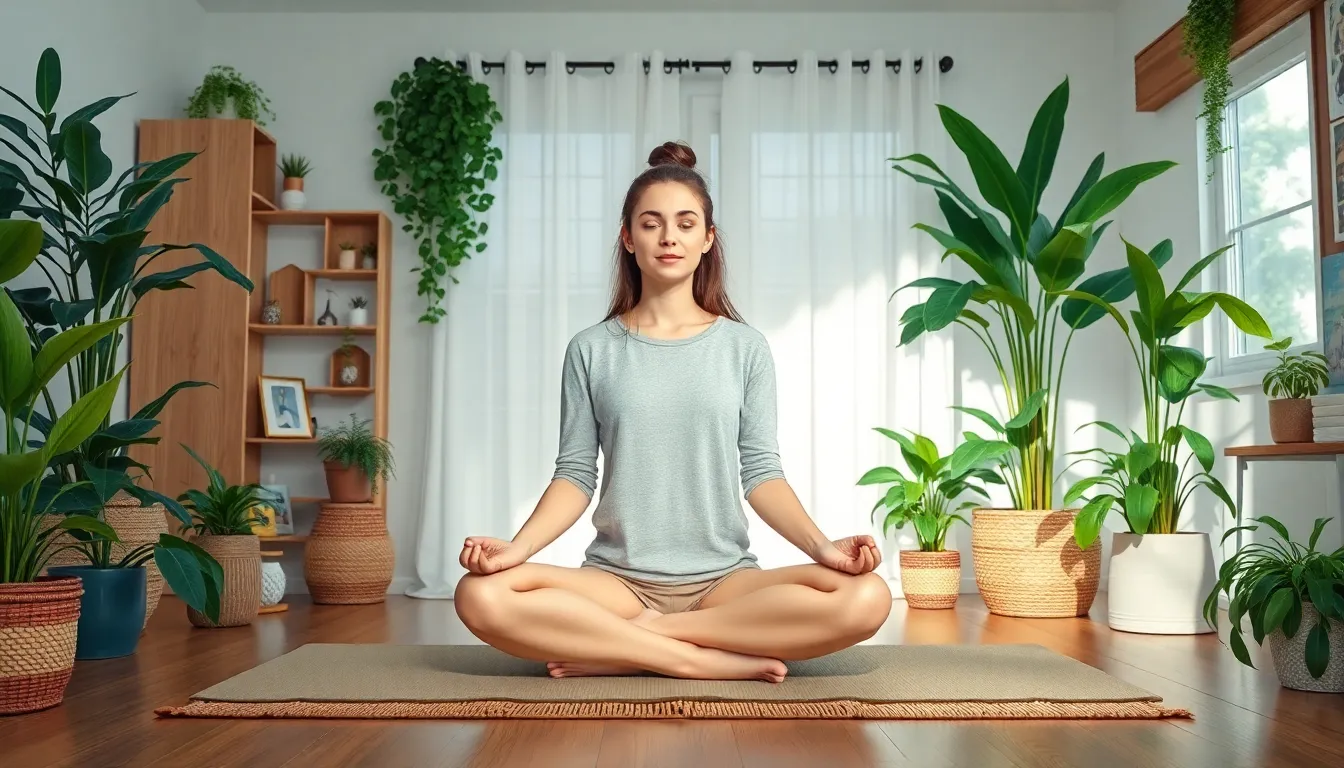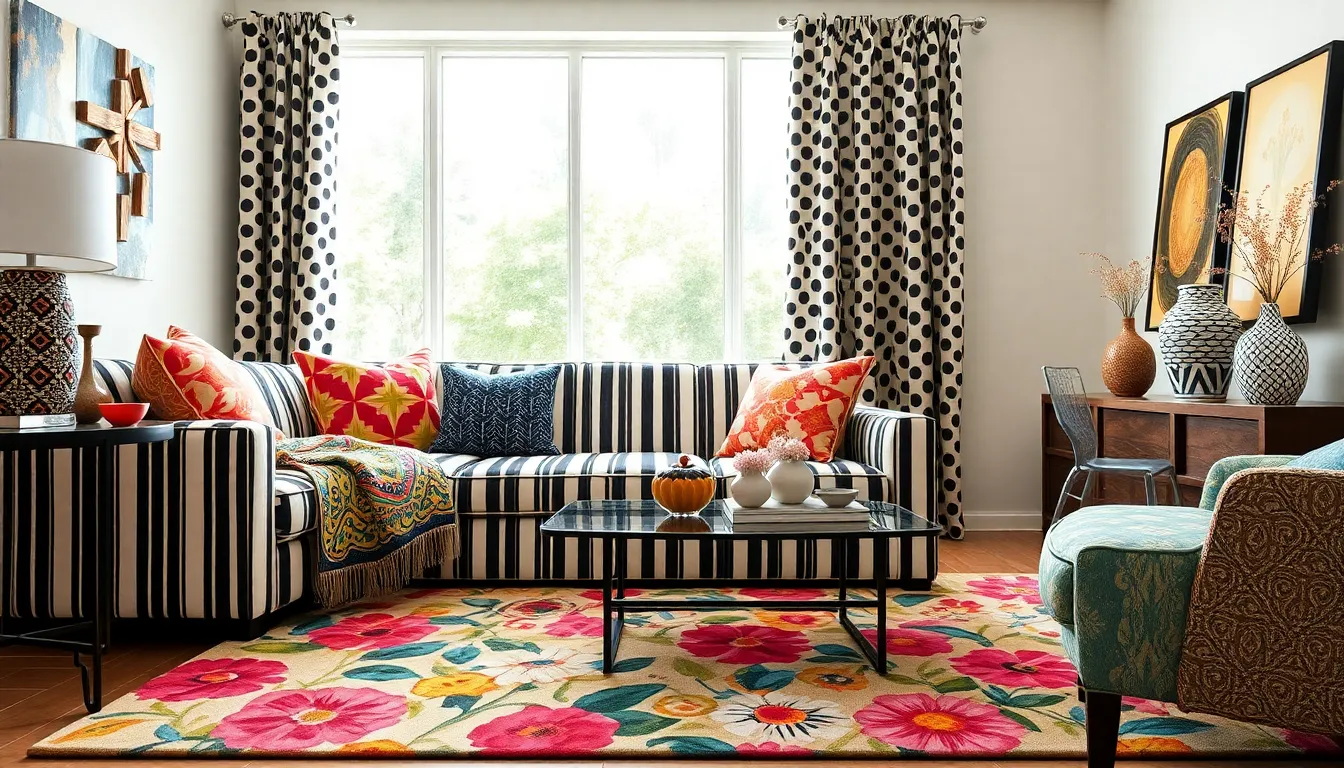In today’s fast-paced world, finding a slice of tranquility at home is like searching for a unicorn in a haystack. But fear not! Home wellness spaces are here to turn that elusive dream into a cozy reality. Imagine transforming a forgotten corner into your personal oasis—complete with soothing scents, calming colors, and maybe even a zen fountain that doubles as a cat water bowl.
These spaces aren’t just for yoga enthusiasts or meditation gurus. They’re for anyone looking to escape the chaos of daily life, even if it’s just for a few minutes with a good book and a cup of herbal tea. Discover how to create a sanctuary that not only boosts your mood but also gives your home that Instagram-worthy vibe. After all, who wouldn’t want to be the envy of their friends with a space that screams relaxation?
Table of Contents
ToggleWhat Are Home Wellness Spaces?
Home wellness spaces create personal retreats designed for relaxation and rejuvenation. These areas provide a sanctuary from daily life while promoting physical and mental well-being.
Definition and Importance
Home wellness spaces refer to designated areas within a home that prioritize comfort and tranquility. Such spaces enhance overall well-being by incorporating elements that promote relaxation. Their significance lies in the ability to counteract stress and anxiety, crucial in today’s fast-paced environment. Creating a wellness space encourages self-care, allowing individuals to recharge and reconnect with themselves. Many find that even small adjustments lead to noticeable improvements in mood and perspective.
Key Elements of Wellness Spaces
Key elements define effective wellness spaces and contribute to their calming atmosphere. Soft lighting, such as lamps or candles, creates a soothing ambiance. Incorporating natural materials, like wood and plants, fosters a connection with nature. Tranquil colors, such as blues and greens, evoke feelings of peace and harmony. Adding comfortable seating options invites relaxation and encourages longer stays. Essential oils or diffusers infuse pleasant scents, enhancing the overall experience. Integrating personal touches, such as art or mementos, adds uniqueness and comfort to the space.
Benefits of Creating Home Wellness Spaces

Creating home wellness spaces offers numerous advantages for overall well-being. Prioritizing personal sanctuaries helps individuals escape from daily stressors, fostering peace and relaxation.
Enhanced Mental Health
Mental health improves significantly through dedicated wellness areas. Tranquil environments contribute to reduced anxiety and stress levels. Soft lighting and soothing colors create a calming atmosphere. Essential oils, such as lavender and chamomile, promote relaxation and enhance mood. Regular use of these spaces encourages mindfulness and allows for mental clarity. Individuals can unwind and focus on self-care in their personalized retreats. Incorporating art or personal mementos adds emotional significance, reinforcing positive feelings. Such intentional spaces ultimately nurture mental well-being and boost happiness.
Improved Physical Wellbeing
Physical health benefits immensely from home wellness spaces. These areas promote activities like yoga, stretching, or simple meditation, encouraging regular physical movement. Comfortable seating reduces strain on the body, fostering relaxation and comfort. Natural materials, such as wood or plants, enhance air quality and create a rejuvenating environment. Access to calming scents stimulates positive responses in the body, further elevating physical wellness. Ultimately, wellness spaces encourage healthier habits and routines, reinforcing the link between environment and physical health. Regular engagement in these areas supports an active lifestyle and promotes overall vitality.
Design Considerations for Home Wellness Spaces
Designing an effective home wellness space requires thoughtful consideration of several key aspects. These details significantly enhance the ambiance and functionality of the area.
Choosing the Right Location
Selecting an appropriate location directly impacts the overall effectiveness of the wellness space. A corner in a quiet room often works well, as it minimizes interruptions. Spaces with ample natural light contribute positively to mood enhancement, making them ideal for relaxation. Proximity to nature can further boost tranquility. Placing the wellness area away from high-traffic zones allows for an uninterrupted experience. Consider using any underutilized nooks in the home to maximize impact.
Incorporating Natural Elements
Integrating natural elements into the design enhances the calming atmosphere. Plants such as peace lilies or snake plants improve air quality and add life to the space. Natural light promotes vitality, creating a connection to the outdoors. Materials like wood, stone, and cotton provide tactile comfort while reinforcing the theme of nature. Using earthy color palettes—such as greens, browns, and soft blues—fosters a sense of harmony and peace. Incorporating water features, even small ones like fountains, contributes soothing sounds that promote relaxation.
Popular Features of Home Wellness Spaces
Creating effective home wellness spaces involves incorporating features that promote relaxation and rejuvenation. Functional areas include meditation areas, fitness zones, and relaxation nooks designed to enhance overall well-being.
Meditation Areas
Meditation areas provide dedicated spaces for mindfulness practices. Ideal locations often feature soft lighting and minimal distractions, allowing for deeper focus. Incorporating comfortable seating, like floor cushions or meditation benches, enhances comfort during practice. It’s beneficial to include calming elements such as plants or soothing artwork to create a serene atmosphere. Using gentle colors like soft blues or greens can further enhance tranquility in these spaces. Essential oils or incense can also be used to create sensory experiences that promote relaxation and clarity.
Fitness Zones
Fitness zones encourage physical activity and wellness. Setting up a designated area with adequate floor space allows for various activities like yoga, Pilates, or strength training. Utilizing multi-functional equipment maximizes efficiency, making the most of smaller spaces. Mirrors can create an illusion of size while providing opportunities for self-correction during workouts. Adding motivational elements such as inspiring quotes or personal achievements can boost resolve. Incorporating natural light through windows creates an invigorating environment, fostering enthusiasm for regular exercise.
Relaxation Nooks
Relaxation nooks serve as cozy retreats for unwinding. Creating these spaces often involves adding comfortable seating, like lounge chairs or hammocks, to promote restful moments. Soft textiles such as throw blankets and pillows enhance comfort, inviting prolonged use. Including small side tables for beverages or books fosters a more inviting atmosphere. Dimming lights or adding adjustable illumination options can set the mood for relaxation. Personal touches, such as curated reading materials or favorite artwork, make these spaces feel uniquely calming and tailored to individual preferences.
Creating a home wellness space is a powerful step towards enhancing overall well-being. By dedicating areas for relaxation and rejuvenation, individuals can cultivate a sanctuary that nurtures both mind and body. Thoughtful design choices and personal touches transform ordinary spaces into calming retreats.
The benefits of these wellness spaces extend beyond aesthetics. They provide essential moments of tranquility in a chaotic world, promoting mindfulness and reducing stress. With just a few adjustments, anyone can foster an environment that supports healthier habits and uplifts their mood.
Ultimately, home wellness spaces are not just a trend; they’re a vital investment in personal health. Embracing this concept can lead to a more balanced and fulfilling life.




